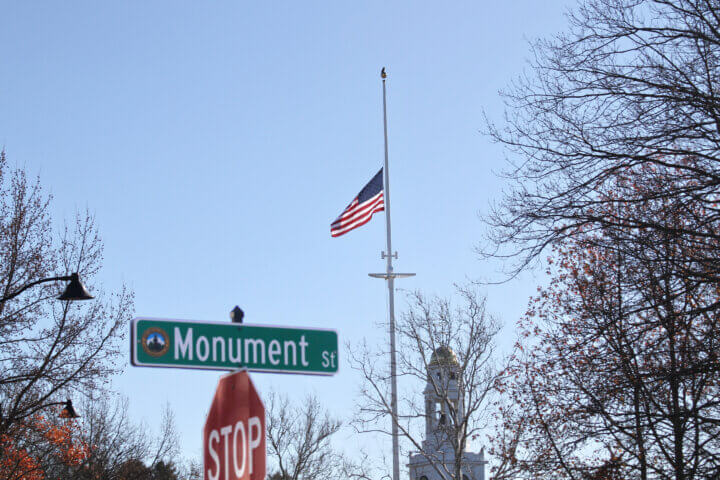Finding affordable housing in Concord isn’t easy.
Over the years, supply has failed to keep pace with demand, driving prices on Concord homes ever upward. For some, it has made Concord unaffordable even as efforts to build more affordable housing — or convert existing dwellings from market rate to affordable — continue.
Two projects now in the works are Junction Village and Assabet Bluffs. According to Lee Smith, chair of the Concord Housing Development Corporation, a developer won the Junction Village project, but that agreement lapsed in 2022 after the pandemic.
The CHDC then held multiple community meetings to determine the best sort of housing to build on the land. Smith said he expects the CHDC will issue a request for proposals for the site this autumn, with the project awarded in late 2023 or early 2024.
Assabet Bluffs will build five affordable units on an acre of land off Old Marlboro Road. Three of the units will be new and an existing duplex at the site will be refurbished. The CHDC plans to issue a request for proposals for Assabet Bluffs simultaneously with Junction Village to try to attract a developer for both projects, though that is not a requirement, Smith wrote in an email.
“An optimistic person could expect construction to begin on one or both projects within a year,” Smith wrote.
Concord is not alone in struggling with the affordable housing issue.
“The problem facing Concord is the problem facing the commonwealth,” said Dan Drazen. “There is a housing crisis because we have not built enough housing to keep up with population growth.”
Drazen, a Concord resident, is a 13-year real estate professional focused on affordable housing. [Drazen sits on the board of the CHDC but was clear he was not speaking for the board.]
The lack of production skews the supply and demand equation. If there isn’t enough supply to meet demand, the price will go up as people compete for limited resources. Because not enough housing is being built, the supply chain has become artificially constricted, Drazen said.
Drazen cites a Brookings Institute study showing that from 1960 to 1990, there were 900,000 new housing units permitted in Massachusetts. Since 1990, that number has dropped to 470,000.
Affordable housing is important for a community because it promotes diversity, equity and inclusion, Smith wrote. It also allows longtime residents to remain in town as the range of affordable housing increases.
In addition, the availability of affordable housing has a compounding impact on a range of factors. It can promote smart growth, generating new development that promotes protection of natural resources and climate change adaptation and resilience, Smith said.
“A town-wide effort is needed in order to support and work toward these goals that can define the fabric of our community,” Smith wrote.
Speeding up the production and development of new housing will not be easy, Drazen said. First, it will take political will. Legislative initiatives such as the MBTA Communities Law, which encourages towns served by the T to build more housing around transit hubs, is a decent start, he said.
“We should support efforts to allow for denser housing in certain areas of town,” he said.
Denser development would have other benefits: The environmental impact of a 50-unit apartment building is smaller than the impact of 50 single-family structures, Drazen said.
“It’s apples and oranges as far as the impact is concerned,” he said.
Winning the hearts and minds of residents to encourage more affordable housing construction is a matter of emphasizing the scope and impact of the housing crisis and focusing on the idea that denser development is climate-friendly, he said.
There has been some resistance.
In 2022, a Town Meeting article to change the zoning of the Crosby’s Marketplace parking lot on Sudbury Road, which would have allowed for more dense development, fell short. But Drazen is optimistic, believing the resistance to affordable housing development will shift.
‘I think the initial apprehension around the approval of any new development is starting to shift. It’s going to take some time,” he said.
According to Smith, the CHDC continues to pursue opportunities to buy land for affordable housing. Because they are not a town board or committee, the CHDC can buy and sell land on its own authority. However, Smith pointed out having money on hand is important.
“Typically, if a property comes on the market, if the CHDC is to be a buyer, it needs the deposit and purchase money to be available at that time. If the CHDC has to wait for funding from Town Meeting, the seller is rarely willing to wait out that process which can take up to a year,” Smith wrote.
“This is why it is so important that the CHDC and the Concord Municipal Affordable Housing Trust have money appropriated and ready to spend when opportunities to preserve or create affordable housing units become known.”
Every five years, the town updates its housing production plan, outlining short- and long-term strategies for developing affordable housing.
As part of its five-year strategy section, the production plan includes both the CHDC projects — and several that could be pursued by another local affordable housing organization, the Concord Municipal Affordable Housing Trust.
The production plan calls for CMAHT to pursue other land for the creation of affordable housing, citing examples such as the former Starmet site, the Best Western on Elm Street and the Peabody Middle School.
According to the plan, there are several privately owned parcels which might be appropriate for future residential development, although as of approval of the report, nothing was in the works. Those sites include:
- 300-310 Baker Ave. – a mixed use location
- 221 Baker Ave. (New Life Community Church) – a mixed use location
- 874 Barretts Mill Road (near the Concord Rotary)
- 100 Main Street (existing office building)
- 91 Lowell Road (existing retail building)
- 4B Old Road to Nine Acre Corner – open lot adjacent to CareOne
- Land (12 acres total) at the corner of Old Road to Nine Acre Corner and Old Marlboro
Road opposite Emerson Hospital (and currently owned by Emerson Hospital).
- 91B Main Street (owned by the State – adjacent to a Habitat for Humanity property)
- 7X Old Bridge Road and 80 X Main Street (undeveloped land)
- 46B Fitchburg Turnpike (adjacent to Cold Brook Crossing development on Rt. 117)






